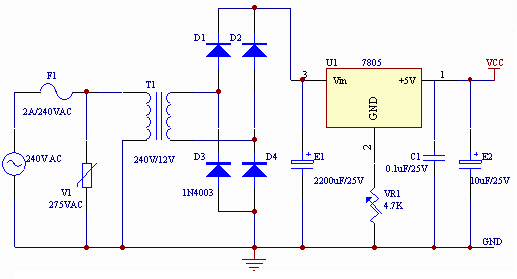
The circuit presented here takes care of the low gain by adding an AC shunt to the feed-back path and using an electret mic for the input the 2.5 V set on the control input at stable operating condition suits an electret mic per fectly. The first prototype had a 35 ohms loudspeaker as a load (RL), this gave good results although the TL431 ran a bit warm with a Vccof 12 V. An old 130 ohm telephone earpiece is likely to present a less stressful load. AC shunt C2 (100 µF) has to be a quality component in terms of its ESR specification don’t just use a scruffy capacitor lying about as you may experience RF sensitivity. It was necessary to add a series resistor (R3; about 100 ohms) or in extreme cases an inductor (L1; 100 – 220 µH).
The circuit has a couple of handy features, firstly it wor k s ver y well on the end of a twisted-pair the output can be tapped off at the wiper if RLis a pot at the power supply end, secondly by salvaging the JFET from an old electret mic (some common types of JFET will work but not quite as well), just about any piezo electric element can be used as the transducer. Brass disc sounders give a good output (handy as vibration sensors if glued to a structure); even the quartz discs from clock crystals give some output, a phono crystal cartridge gives a high output and the piezo-ceramic pellet from a flintless cigarette lighter gives a huge output... the range of possible applications is awesome!
A surprising application is the ability to test the microphonic sensitivity of ordinary capacitors! Disc ceramic types don’t need to be tapped very hard to produce an output but rolled metalised foil types produce some out-put too.



